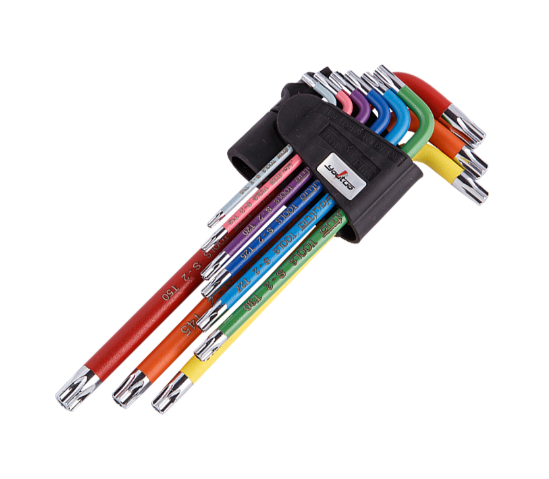Hexagonal wrenches feature working ends with hexagonal or twelve-angle holes, making them ideal for tight spaces where standard wrenches can’t fit. There are both internal and external hex wrenches. The Allen wrench is a common type used for tightening screws or nuts, particularly for assembling and disassembling large hex screws or nuts. Due to the variety of fastener sizes, Allen wrenches come in numerous specifications.
The main sizes of hex wrenches include 1.5mm, 2mm, 2.5mm, 3mm, 4mm, 5mm, 6mm, 8mm, 10mm, 12mm, 14mm, 17mm, 19mm, 22mm, and 27mm. Hex wrenches are simple, lightweight, easy to use, durable, and functional at both ends.
Allen wrenches are available in both imperial and metric systems. While these systems have different dimensional standards, they can sometimes be used interchangeably. It can be challenging to distinguish between metric and imperial screws during installation or removal because some sizes are very close. For example, 5/64″ is roughly 1.98mm, nearly the same as a 2mm wrench. Manufacturing tolerances, thermal expansion, contraction, and rust can blur these differences. Typically, you use whichever wrench fits best, without worrying too much about the system.
To use a hex wrench, insert the hex end into the hexagonal hole of the socket screw. Press down with your left hand to maintain position and prevent slipping while rotating the wrench with your right hand to tighten or loosen the screw.
The hexagonal wrench is a simple, lightweight tool with six contact surfaces between the screw and wrench, distributing stress evenly and reducing damage. It’s a popular hand tool for tightening screws in deep or tight spaces. Hex wrenches are easy to manufacture, cost-effective, and functional at both ends, making them widely used.

